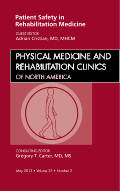
Physical Medicine and Rehabilitation Clinics of North America
Scope & Guideline
Driving excellence in rehabilitation and patient care.
Introduction
Aims and Scopes
- Traumatic Brain Injury (TBI) Rehabilitation:
The journal extensively covers the evaluation, management, and rehabilitation of traumatic brain injuries, including neuropsychological assessments, management of complications, and community reintegration strategies. - Stroke Recovery and Rehabilitation:
Research on stroke recovery is a critical focus, with articles addressing innovative rehabilitation techniques, neuroplasticity, and post-stroke cognitive impairment, highlighting the importance of tailored rehabilitation programs. - Pain Management and Rehabilitation:
The journal explores various aspects of pain management, particularly in the context of rehabilitation, including the use of pharmacology, complementary therapies, and innovative interventions such as neurostimulation. - Emerging Technologies in Rehabilitation:
A significant emphasis is placed on the integration of technological advances in rehabilitation practices, including robotics, virtual reality, and telerehabilitation, which enhance patient engagement and therapy efficacy. - Holistic and Integrative Approaches:
The journal promotes a holistic view of rehabilitation, incorporating complementary and integrative medicine perspectives to address complex patient needs, including mental health considerations and chronic pain management.
Trending and Emerging
- Post-COVID Rehabilitation:
A significant increase in focus on the rehabilitation of post-COVID-19 sequelae highlights the growing need to address the long-term effects of the pandemic on physical and mental health. - Innovations in Telehealth and Telerehabilitation:
With the rise of telehealth, there is a marked trend towards exploring innovative approaches in telerehabilitation, enabling remote patient monitoring and therapy, which has become crucial during and after the COVID-19 pandemic. - Cognitive Rehabilitation and Mental Health Integration:
There is a growing emphasis on cognitive rehabilitation strategies and the integration of mental health approaches in rehabilitation, particularly in TBI and stroke recovery, recognizing the importance of addressing psychological aspects of recovery. - Technological Advancements in Rehabilitation Techniques:
The integration of advanced technologies, such as virtual reality and robotics, is increasingly prevalent in rehabilitation practices, indicating a trend towards enhancing patient engagement and therapy outcomes. - Holistic and Multidisciplinary Approaches:
There is a rising interest in holistic rehabilitation approaches that combine traditional medical practices with integrative therapies, reflecting a shift towards comprehensive patient-centered care.
Declining or Waning
- Traditional Pain Management Techniques:
There has been a noticeable decrease in articles focusing on conventional pain management methods, such as opioid prescriptions, as the field moves toward more integrative and multimodal approaches. - General Rehabilitation Strategies:
General discussions on rehabilitation strategies, without specific focus areas, are becoming less common, as the journal increasingly emphasizes specialized, evidence-based approaches tailored to specific conditions. - Pediatric Rehabilitation:
Research dedicated solely to pediatric rehabilitation topics has diminished, possibly due to a broader focus on adult rehabilitation and emerging conditions like post-COVID sequelae, which are more prevalent in adult populations.
Similar Journals

Turkish Journal of Physiotherapy Rehabilitation-Turk Fizyoterapi ve Rehabilitasyon Dergisi
Shaping the future of physiotherapy and sports medicine.The Turkish Journal of Physiotherapy Rehabilitation (Turk Fizyoterapi ve Rehabilitasyon Dergisi), published by the TURKEY ASSOC PHYSIOTHERAPISTS, stands as a significant platform for the dissemination of research and developments in the fields of physiotherapy, rehabilitation, orthopedics, and sports medicine. Since its inception in 2018, the journal has been dedicated to advancing the understanding and practice of rehabilitation therapies, contributing valuable insights to both clinicians and researchers alike. Currently classified in the Q4 category across various relevant fields, including Orthopedics, Sports Medicine, and Physical Therapy, it reflects the evolving landscape of rehabilitation science. Although the journal is indexed in Scopus with ranks indicating its nascent stage, it serves as an essential resource for the academic community in Turkey and beyond. Researchers and professionals interested in innovative rehabilitation practices and advancements are encouraged to utilize this open access journal to share knowledge, fostering collaboration and growth within this critical area of healthcare.

PHYSIKALISCHE MEDIZIN REHABILITATIONSMEDIZIN KURORTMEDIZIN
Empowering Recovery: Insights from the Heart of Rehabilitation SciencePHYSIKALISCHE MEDIZIN REHABILITATIONSMEDIZIN KURORTMEDIZIN, published by GEORG THIEME VERLAG KG, is a prominent journal dedicated to the fields of physical medicine, rehabilitation, and resort medicine. With its ISSN of 0940-6689 and E-ISSN 1439-085X, this journal has been at the forefront of disseminating essential research and innovative practices since its inception. Operating from Germany, it offers a crucial platform for professionals, researchers, and students engaged in exploring the latest advancements in rehabilitation methodologies and therapeutic practices. Although it currently holds a Q4 ranking in several categories including Physical Therapy and Rehabilitation, the journal is committed to enhancing its impact and visibility within the academic community. The journal publishes research, reviews, and clinical studies aimed at improving patient outcomes and advancing the science of rehabilitation. Subscribers can expect high-quality content that addresses both theoretical and practical aspects of rehabilitation medicine, ultimately contributing significantly to ongoing discussions and developments in the field.

Journal of Exercise Rehabilitation
Fostering Global Collaboration in Exercise RehabilitationThe Journal of Exercise Rehabilitation is a leading academic publication dedicated to advancing the field of physical therapy, sports therapy, and rehabilitation. Published by the Korean Society of Exercise Rehabilitation, this open-access journal, available since 2013, facilitates the dissemination of high-quality research and innovative practices in exercise rehabilitation. With an impressive impact factor and an H-index reflecting its academic influence, the journal is ranked in the Q2 category for Physical Therapy and Sports Therapy and Rehabilitation, and Q3 for Orthopedics and Sports Medicine as of 2023. Operating from South Korea, it serves as a vital platform for researchers, practitioners, and students alike, fostering collaboration and the sharing of knowledge across borders. By including studies that span from 2017 to 2024, it not only highlights significant advances in the field but also encourages ongoing exploration and discussion. Engage with the Journal of Exercise Rehabilitation to contribute to this dynamic and evolving discourse in rehabilitation science.
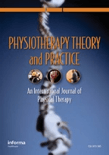
PHYSIOTHERAPY THEORY AND PRACTICE
Advancing the Science of RehabilitationPHYSIOTHERAPY THEORY AND PRACTICE is a leading journal within the realm of physical therapy, sports therapy, and rehabilitation, published by Taylor & Francis Inc. With an ISSN of 0959-3985 and an E-ISSN of 1532-5040, this esteemed journal focuses on the interdisciplinary approaches and clinical practices that advance the science and application of physiotherapy. Ranking in the top 33% of its category as indicated by its Q2 status in the 2023 category quartiles, it serves as an essential conduit for innovative research and evidence-based practices. The journal has been a vital resource since its inception in 1985, continuing to attract contributions that explore the latest developments in rehabilitation and therapy strategies. Although currently not an Open Access journal, PHYSIOTHERAPY THEORY AND PRACTICE remains pivotal in shaping the landscape of health professions, providing insightful articles that empower researchers, practitioners, and students to enhance patient care and treatment strategies in an evolving field.

Physiotherapy
Innovating Rehabilitation Strategies for AllPhysiotherapy, published by Elsevier Science Ltd, stands as a prestigious journal in the field of Physical Therapy, Sports Therapy, and Rehabilitation. Since its inception in 1945, this journal has been committed to advancing the practice and science of physiotherapy through rigorous peer-reviewed research, making significant contributions to both clinical practice and academia. With an impressive Q1 ranking and a Scopus percentile of 88th, it is widely regarded as a leading source of evidence-based information for professionals and researchers alike. The journal operates without an Open Access option, which ensures that it maintains the quality and integrity of the research it publishes while providing exclusive access to valuable insights for its subscribers. By focusing on diverse topics within its scope, including therapeutic techniques, rehabilitation strategies, and sports medicine, Physiotherapy continues to shape the future of physiotherapy practice and education, making it an essential resource for anyone invested in this dynamic field.
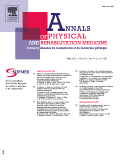
Annals of Physical and Rehabilitation Medicine
Empowering Practitioners with Insightful Rehabilitation StudiesAnnals of Physical and Rehabilitation Medicine, published by Elsevier France-Editions Scientifiques Medicales Elsevier, stands as a leading peer-reviewed journal in the fields of Orthopedics and Rehabilitation. With its ISSN 1877-0657 and E-ISSN 1877-0665, this esteemed journal is known for its high-quality research articles that significantly influence clinical practices and advancements in rehabilitation medicine. Recognized for its impact, the journal is categorized in the Q1 quartiles for both Orthopedics and Sports Medicine as well as Rehabilitation disciplines. According to the Scopus rankings, it ranks #5 out of 161 in Rehabilitation and #20 out of 321 in Orthopedics and Sports Medicine, illustrating its critical role in shaping the future of these fields with a remarkable 97th and 93rd percentile standing respectively. With a commitment to excellence, the journal publishes innovative research that addresses the evolving needs of both practitioners and patients, making it an essential resource for researchers, professionals, and students dedicated to improving rehabilitation practices. The journal operates under conventional access options, ensuring that its groundbreaking findings remain accessible to a wide audience.
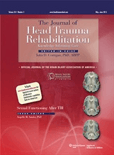
JOURNAL OF HEAD TRAUMA REHABILITATION
Exploring the future of head trauma management.JOURNAL OF HEAD TRAUMA REHABILITATION, published by LIPPINCOTT WILLIAMS & WILKINS, is a premier peer-reviewed journal dedicated to advancing the science and practice of managing head trauma and its rehabilitation. With an ISSN of 0885-9701 and an E-ISSN of 1550-509X, this journal has been a significant resource since its inception in 1986 and continues to provide critical insights into neurological and rehabilitative care, particularly as it spans the years until 2024. The journal boasts impressive rankings, including Q2 in Neurology (Clinical) and Q1 in both Physical Therapy, Sports Therapy and Rehabilitation, and Rehabilitation for 2023, underscoring its impact and relevance in the field. It is well-regarded in Scopus ranks as well, holding a rank of #27 out of 161 in Medicine Rehabilitation and #47 out of 247 in Health Professions. With no open access option available, the journal invites subscriptions and affiliations from academic institutions, healthcare professionals, and researchers committed to excellence in rehabilitation practices. Aimed at enhancing clinical techniques and methodologies, the JOURNAL OF HEAD TRAUMA REHABILITATION is essential reading for anyone invested in the recovery and rehabilitation of individuals with head injuries.
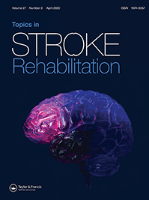
Topics in Stroke Rehabilitation
Exploring the frontiers of neurorehabilitation.Topics in Stroke Rehabilitation, published by Taylor & Francis Ltd, stands as a premier academic journal offering cutting-edge research and insights in the fields of rehabilitation, neurology, and community care. With an impressive impact factor reflecting its strong scholarly influence, this journal not only maintains a distinguished Q1 ranking in Community and Home Care and Rehabilitation but is also recognized in the Q2 category for Clinical Neurology, showcasing its relevance across multiple disciplines. Covering a comprehensive range of topics from neurorehabilitation techniques to patient-centered care strategies, Topics in Stroke Rehabilitation serves as an essential resource for researchers, healthcare professionals, and students dedicated to enhancing the quality of life for individuals recovering from stroke. With an accessible archive dating back to 1996 and continuous publication through 2024, this journal invites collaboration and discourse, fostering advancements in both theoretical knowledge and practical applications within the realm of stroke rehabilitation.
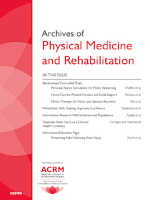
ARCHIVES OF PHYSICAL MEDICINE AND REHABILITATION
Innovative Studies Driving Change in Physical TherapyArchives of Physical Medicine and Rehabilitation, published by W B Saunders Co-Elsevier Inc., is a premier academic journal dedicated to the fields of physical therapy, sports therapy, and rehabilitation. Since its inception in 1945, it has evolved to provide a platform for groundbreaking research and insightful discourse that shapes clinical practice and enhances patient outcomes. With a notable impact factor and ranking in the top quartiles of its respective categories, this journal consistently showcases the most innovative studies, systematic reviews, and evidence-based practices that drive forward the understanding of rehabilitation medicine. As a vital resource for researchers, healthcare professionals, and students alike, it contributes significantly to the advancement of knowledge in rehabilitation sciences. With an aim to bridge the gap between research and practice, the journal invites contributions from all disciplines related to physical medicine and rehabilitation, fostering a collaborative environment that promotes the dissemination of impactful findings.

Rehabilitation Research and Practice
Empowering Recovery with Evidence-Based Practices.Rehabilitation Research and Practice is a distinguished open-access journal published by HINDAWI LTD, dedicated to advancing knowledge in the fields of rehabilitation, physical therapy, and sports therapy. With its ISSN 2090-2867 and E-ISSN 2090-2875, the journal has been a pivotal resource for researchers and practitioners since its inception in 2010. Based in Egypt and reaching an international audience, the journal encapsulates cutting-edge research and evidence-based practices that significantly contribute to patient care and rehabilitation strategies. Notably, it holds a reputable position in the Scopus rankings—42nd out of 161 in Medicine Rehabilitation and 74th out of 247 in Health Professions. The journal enjoys a Q2 status in the 2023 category quartiles, reflecting its influence and quality within the academic community. The journal's commitment to an open-access format not only enhances its visibility and accessibility but also fosters collaboration among professionals, making it an indispensable resource for anyone engaged in rehabilitation research and practice.